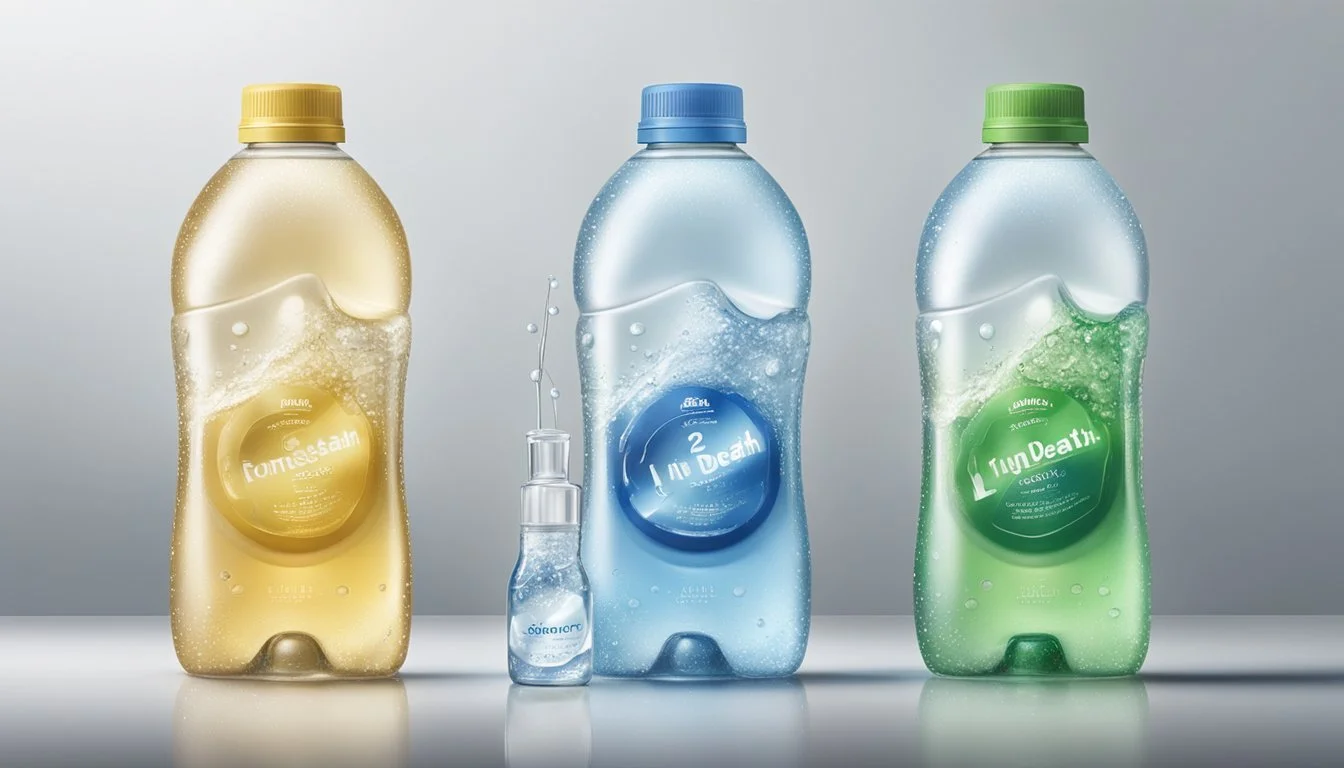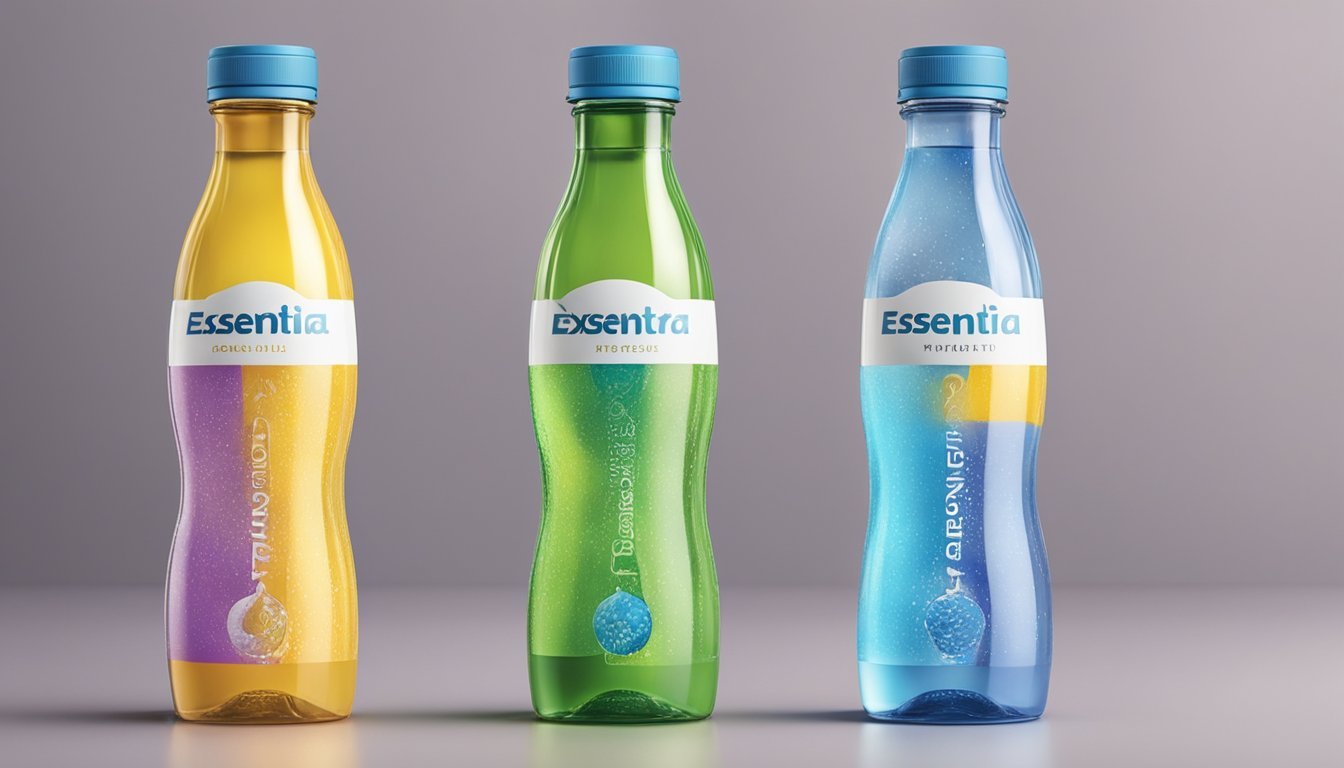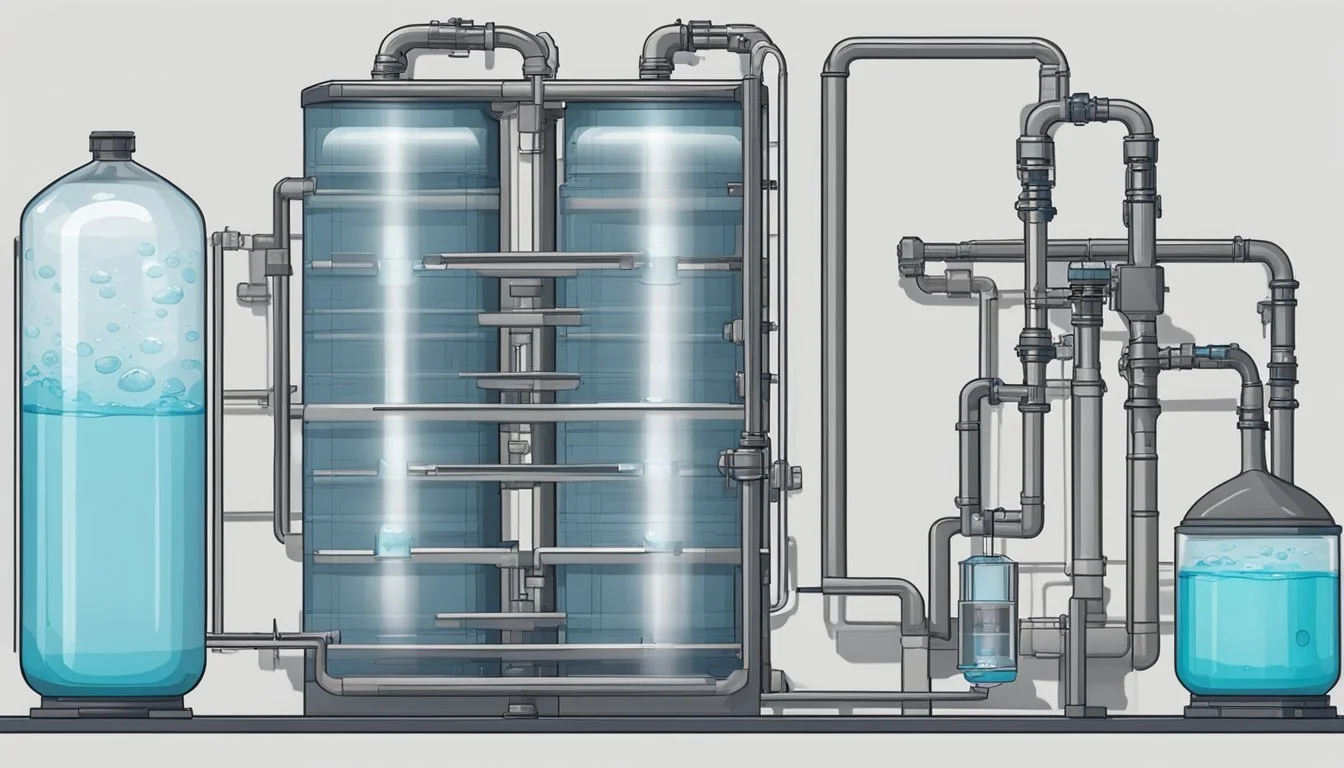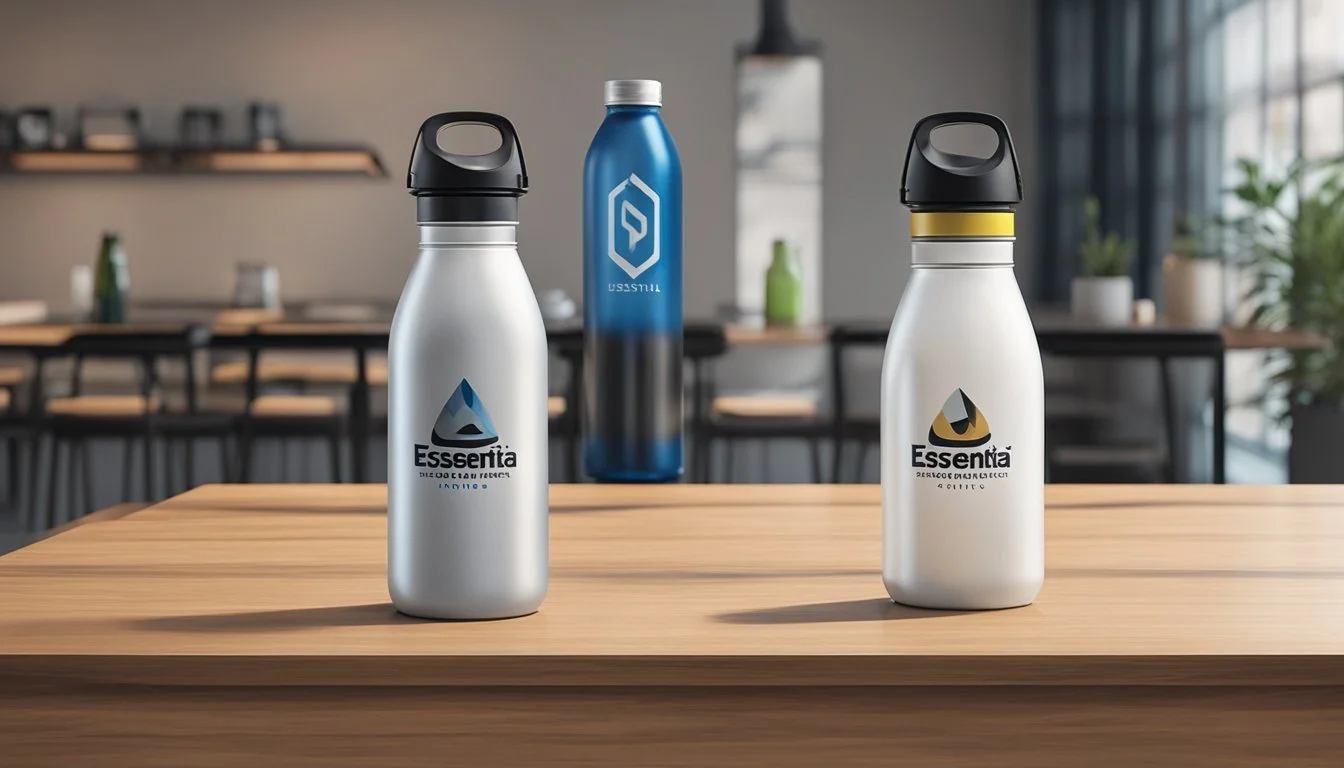Essentia vs. Liquid Death
Detailed Comparison of Top Bottled Waters
When it comes to choosing the best bottled water, it's essential to weigh the benefits of different brands. Two noteworthy options are Essentia and Liquid Death. Essentia stands out with its high alkaline pH of 9.5, making it a top choice for those who prioritize balanced hydration. Liquid Death, on the other hand, offers a unique appeal with its packaging in aluminum cans, promoting a more sustainable choice compared to plastic.
For those who focus on taste, Essentia is known for its clean and crisp flavor, while Liquid Death offers both still and sparkling options, providing versatility for different preferences. Hydration is crucial, and both brands ensure this with their distinct approaches, making each a compelling choice depending on one's priorities.
In the end, the better bottled water between Essentia and Liquid Death depends on individual needs like pH preference, packaging materials, and taste. Each brand offers unique benefits that cater to different lifestyle choices, whether it be the alkaline advantage of Essentia or the eco-friendly packaging of Liquid Death.
Understanding Bottled Water
Understanding the different types of bottled water, their regulations, and their environmental impact is crucial for making informed choices. Each type has distinct characteristics that impact both health benefits and environmental considerations.
Types of Bottled Water
Spring Water: Sourced from natural springs, spring water undergoes minimal processing. It retains natural minerals, potentially offering health benefits.
Mineral Water: Mineral water contains naturally occurring minerals and trace elements. It must be bottled at the source and sometimes has a therapeutic value due to its unique mineral content.
Purified Water: Purified water goes through processes like distillation, deionization, or reverse osmosis. These processes remove impurities and contaminants, providing very clean water.
Distilled Water: Distilled water is a type of purified water that results from boiling water and condensing its steam back into a liquid. This method removes all minerals and impurities.
Alkaline Water: Alkaline water has a higher pH level than regular water. It is believed to neutralize acid in the bloodstream, although scientific evidence on its benefits is limited.
Carbonated Water: Also known as sparkling water, this water is infused with carbon dioxide gas under pressure. It can be either naturally carbonated or artificially carbonated.
Regulation and Standards
Bottled water is regulated by the Food and Drug Administration (FDA) in the United States. The FDA mandates that bottled water must meet standards for contaminants such as heavy metals, toxic chemicals, and bacteria.
The Environmental Protection Agency (EPA) regulates tap water and sets comparable standards to ensure safety. Labeling is essential as it informs consumers about the source and treatment of the water. Critical standards include:
Microbiological standards: Ensure the absence of harmful bacteria.
Chemical standards: Limit levels of hazardous substances like lead and arsenic.
Labeling standards: Require details about water source and treatment methods.
Environmental Considerations
Bottled water's environmental impact includes concerns about plastic waste and carbon footprint. Plastic bottles often end up in landfills or oceans, contributing to pollution. Recycling programs exist but are not always effective.
The production process itself consumes significant energy and resources. It includes drilling, bottling, shipping, and disposal stages.
Eco-friendly alternatives are being explored, such as:
Biodegradable bottles: Made from plant-based materials.
Increased recycling efforts: Encouraging consumers to recycle.
Reusable bottles: Promoting the use of personal reusable bottles.
Choosing sustainable options helps mitigate the environmental effects of bottled water consumption, supporting broader environmental protection efforts.
Health and Hydration
When comparing Essentia and Liquid Death, it's essential to address the health benefits and hydration efficacy of these two bottled waters. Key differences lie in their electrolyte content and pH levels, which directly affect hydration quality.
Benefits of Proper Hydration
Proper hydration supports various bodily functions, including temperature regulation, joint lubrication, and waste elimination. Staying hydrated can improve mental clarity and physical performance.
Essentia water, known for its high pH level over 9.5, offers an alkaline option that some believe helps neutralize acid in the bloodstream.
Liquid Death provides a more neutral pH. Both brands, free from additives, offer clean hydration, but Essentia's high pH might add extra benefits for those looking for alkaline water.
Role of Electrolytes
Electrolytes like calcium, magnesium, potassium, and sodium are crucial in maintaining the body's fluid balance. They help in nerve signal transmission and muscle function.
Essentia contains added electrolytes, which may enhance hydration efficiency, especially during intense physical activity. The electrolytes in Essentia include calcium and magnesium, which support muscle function, and potassium, which aids in maintaining heart health.
Liquid Death, primarily offering purified water without added electrolytes, is packaged in aluminum rather than plastic, which can be advantageous in terms of health and environmental impact.
Comparative Analysis
Essentia and Liquid Death offer distinct attributes that set them apart in the bottled water market. This section evaluates their unique characteristics, focusing on their pH levels, taste, and overall quality.
Essentia Water Attributes
Essentia is known for its high alkaline pH of 9.5, achieved through an ionization process. This high pH is marketed to provide better hydration.
Essentia water goes through a multi-step purification process, which includes reverse osmosis and UV sanitation. This results in a product that some believe to be exceptionally pure.
The brand emphasizes the presence of added electrolytes for taste and hydration. Many users report a clean and crisp taste, stating a preference for its smooth finish.
Liquid Death Profile
Liquid Death sources its water from the Austrian Alps, offering a product known for its natural origin.
The water is packaged in 100% recyclable aluminum cans, emphasizing environmental consciousness. It focuses on natural spring water with no additives, catering to consumers seeking a straightforward hydration option.
The brand also offers a sparkling variant, which is popular among those who enjoy carbonated water. The plain water, unflavored and untouched, appeals to purists.
pH Levels and Quality
Essentia water's pH level is over 9.5, categorizing it as highly alkaline. This high pH is achieved through ionization, which some see as beneficial for neutralizing acidity in the body.
Liquid Death maintains a neutral pH level, typical of natural spring water. This neutrality could be seen as a more balanced option.
Essentia’s ionization and filtration processes remove impurities, showcasing its high purity. Liquid Death, drawn from natural springs, remains untouched, preserving its original mineral content.
Taste and Aftertaste Evaluation
Essentia offers a crisp and clean taste, attributed to its extensive filtration and added electrolytes. The alkaline nature minimizes any aftertaste, resulting in a smooth finish.
Liquid Death is praised for its pure, refreshing taste, reflecting its natural spring source. The can packaging maintains the water’s freshness, and many consumers note a clean aftertaste devoid of metallic hints.
Taste preferences vary: those preferring high-alkaline water might lean towards Essentia, while purists who favor natural spring water may choose Liquid Death.
Filtration, Purification, and Enhancement Processes
When comparing bottled waters like Essentia and Liquid Death, it's essential to examine their filtration, purification, and enhancement processes. These steps ensure water safety, enhance flavor, and provide added health benefits.
Reverse Osmosis Explained
Reverse osmosis is a key component in Essentia's purification method. This process forces water through a semi-permeable membrane to remove contaminants.
The result is water that is 99.9% pure. This high level of purification is vital because it eliminates impurities like bacteria, viruses, and heavy metals. Liquid Death, however, does not utilize reverse osmosis and instead focuses on alternative methods for purifying and enhancing its water.
Distillation vs. Ionization
Essentia employs a unique ionization process after initial filtration to further purify the water and enhance its properties. Ionization removes any remaining acidic ions, resulting in a higher pH level, typically around 9.5.
Distillation, used by some other brands, involves boiling water to create steam and then condensing it back into liquid, leaving impurities behind. Liquid Death does not use ionization or distillation but opts for natural filtration sourced from the Austrian Alps.
Adding Minerals and Electrolytes
After purification, Essentia adds electrolytes to improve taste and hydration levels. These include potassium, magnesium, and calcium, which are essential for bodily functions.
Liquid Death, meanwhile, maintains the natural mineral content of its source water. This approach preserves the original taste and mineral balance, favored by those who prefer less processed options. Both brands emphasize the importance of mineral content for taste and health benefits.
Brand Background and Source
Essentia Water and Liquid Death come from distinct origins and water sources, emphasizing different aspects in their purification processes and company ethics.
Origins and Water Sources
Essentia Water starts as municipal water before undergoing a rigorous purification process. It utilizes micro-filters, reverse osmosis, and ultraviolet exposure to achieve 99.9% purity. The purified water is then infused with electrolytes and ionized, resulting in a high pH level of 9.5 or higher, making it one of the more alkaline options available.
Liquid Death, on the other hand, sources its water from natural springs and aquifers in the Austrian Alps. This spring water is canned at the source, ensuring that its natural mineral content remains intact. Unlike Essentia, Liquid Death does not undergo additional processes to alter its pH or electrolyte composition, emphasizing the natural quality of its water.
Company Ethics and Initiatives
Essentia Water focuses on sustainability and social impact. The company has various initiatives aimed at reducing plastic waste through recycling programs and partnering with organizations to provide clean water access to communities in need. Essentia is independently owned and emphasizes transparency about its sourcing and purification methods.
Liquid Death prides itself on its rebellious branding and environmental commitments. The brand uses 100% recyclable aluminum cans to reduce plastic pollution and supports various environmental causes. Liquid Death often collaborates with non-profits to raise awareness and funds for cleaning up oceans and protecting freshwater sources. Despite its edgy image, its ethical stance is crucial to its brand identity.
Environmental and Health Concerns
When choosing between Essentia and Liquid Death bottled water, it's crucial to consider their environmental and health impacts. This includes assessing the materials used for the bottles, the production process, and potential contaminants in the water.
Bottle Composition and Recycling
Both Essentia and Liquid Death use plastic bottles for their water. Essentia bottles are typically made from polyethylene terephthalate (PET), a widely-used plastic. Liquid Death, known for its striking branding, uses aluminum cans, which are more easily recyclable.
Plastic Bottles:
Made from PET
Can contain BPA, which is a health concern
Often end up in landfills due to low recycling rates
Aluminum Cans:
More easily recyclable
Fewer concerns about BPA
Less likely to contribute to long-term environmental waste
Impact of Bottled Water Production
The production processes for both brands have significant environmental implications. The carbon footprint of producing, transporting, and disposing of bottled water is substantial.
Essentia's production of plastic bottles contributes to the accumulation of plastic waste, which can take hundreds of years to decompose. Liquid Death’s aluminum cans reduce waste with their higher recycling rate but still require energy-intensive mining and production processes.
Environmental Impact of Plastic Bottles:
High carbon footprint due to production and transportation
Long decomposition time
Significant contributor to ocean pollution
Environmental Impact of Aluminum Cans:
More energy-intensive production
Higher recycling rates
Lesser long-term environmental waste
Contaminants and Chemicals
Contaminants in bottled water can pose health risks, and it's important to know what might be in the water you are drinking. Common concerns include PFAS chemicals, lead, heavy metals, arsenic, and mercury.
Essentia:
Claims to be purified and free from most contaminants
Some concerns may still exist regarding trace chemicals from plastic bottles
Liquid Death:
Focuses on purity, often advertising a "clean" profile
Potentially less contaminated due to the absence of plastic leaching chemicals
Key Contaminants:
PFAS Chemicals: Found in some bottled waters, linked to health issues
Heavy Metals: Lead, arsenic, and mercury are harmful even in small amounts
Consumer Considerations
Selecting the right bottled water involves examining various factors like cost, quality, consumer feedback, and alternatives. It's essential to understand how each element impacts the decision-making process.
Cost vs. Quality
Essentia is positioned as a premium alkaline water brand. Its higher price reflects its claimed benefits, such as ionized hydration. Liquid Death, marketed as both an environment-friendly and edgy brand, tends to be more moderately priced.
Price Comparison Example:
Brand Average Price per Bottle (16.9 oz) Essentia $1.50 Liquid Death $1.00
Both brands cater to different price sensitivities and preferences. While some may prefer the health claims of Essentia, others might opt for Liquid Death for its affordability and recyclable packaging.
Consumer Reviews
Consumer feedback highlights specific preferences and perceptions. Many users appreciate Essentia’s smooth taste and hydration benefits, often noting improved energy levels. Reviewers on platforms like Amazon often praise its consistent quality.
Liquid Death receives commendation for its unique branding and aluminum packaging. Consumers like the environmental benefits of aluminum cans, which are more recyclable than plastic. The taste is described as crisp and refreshing, appealing to a broad audience.
Common Positive Remarks:
Essentia: "Hydrating," "Great taste," "Improves energy."
Liquid Death: "Eco-friendly," "Unique branding," "Crisp."
Available Alternatives
In addition to Essentia and Liquid Death, the market offers several other high-quality water brands. Options such as Smartwater, Dasani, and Fiji Water are widely available and known for their unique sourcing and processing methods.
Popular Alternatives:
Smartwater: Known for vapor-distilled water with added electrolytes.
Fiji Water: Renowned for its smooth taste derived from natural aquifers.
Perrier: A popular choice for sparkling water enthusiasts.
LIFEWTR: Focuses on purified water with balanced pH.
These alternatives provide varied options, each with distinct features to meet different consumer needs. Whether prioritizing taste, health benefits, or environmental impact, there's a suitable choice among these brands.
More About Essentia
Essentia vs Cascade Mountain: Which Bottled Water is Better?
Essentia vs Hawaiian Springs: Which Bottled Water is Better?
Essentia vs Icelandic Glacial: Which Bottled Water is Better?
Essentia vs Kirkland Signature: Which Bottled Water is Better?
Essentia vs Mountain Valley Spring Water: Which Bottled Water is Better?
Essentia vs Nestle Pure Life: Which Bottled Water is Better?
Essentia vs Richard's Rainwater: Which Bottled Water is Better?
Essentia vs Talking Rain AQA: Which Bottled Water is Better?
Essentia vs Whole Foods Italian Still Mineral water: Which Bottled Water is Better?
More About Liquid Death
Aqua Carpatica vs Liquid Death: Which Bottled Water is Better?
Core Hydration vs Liquid Death: Which Bottled Water is Better?
Hawaii Volcanic vs Liquid Death: Which Bottled Water is Better?
Hawaiian Springs vs Liquid Death: Which Bottled Water is Better?
Ice Mountain vs Liquid Death: Which Bottled Water is Better?
Icelandic Glacial vs Liquid Death: Which Bottled Water is Better?
Liquid Death vs Cascade Mountain: Which Bottled Water is Better?
Liquid Death vs Crystal Geyser: Which Bottled Water is Better?
Liquid Death vs Crystal Lake: Which Bottled Water is Better?
Liquid Death vs Essence pH10: Which Bottled Water is Better?
Liquid Death vs Kirkland Signature: Which Bottled Water is Better?
Liquid Death vs Proud Source: Which Bottled Water is Better?
Liquid Death vs Richard's Rainwater: Which Bottled Water is Better?
Liquid Death vs Simple Truth: Which Bottled Water is Better?
Liquid Death vs Talking Rain AQA: Which Bottled Water is Better?
Liquid Death vs Whole Foods 365: Which Bottled Water is Better?
Liquid Death vs Whole Foods Italian Still Mineral water: Which Bottled Water is Better?
Mountain Valley Spring Water vs Liquid Death: Which Bottled Water is Better?
Nestle Pure Life vs Liquid Death: Which Bottled Water is Better?
Poland Spring vs Liquid Death: Which Bottled Water is Better?
Purely Sedona vs Liquid Death: Which Bottled Water is Better?
San Pellegrino vs Liquid Death: Which Bottled Water is Better?
Solan de Cabras vs Liquid Death: Which Bottled Water is Better?






